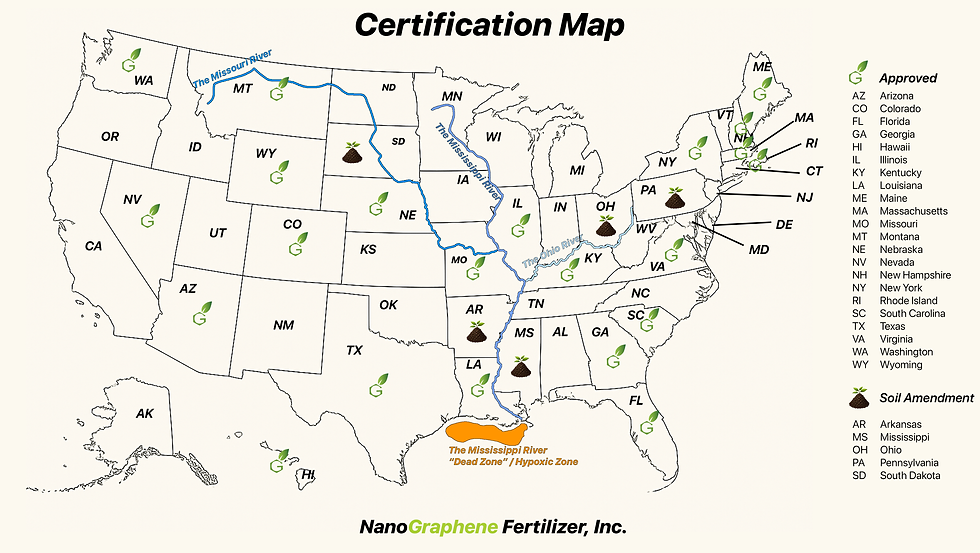First, It's a Global Issue
Global Area Affected
Global Dead Zones

Key Points
The problem is most severe in arid and semi-arid regions, but also affects coastal areas and intensively farmed regions worldwide. (Source)
The top 10 countries (including China, the USA, India, Australia, Argentina, Kazakhstan, Russia, Iran, Sudan, and Uzbekistan) account for about 70% of the world’s salt-affected soils. (Source)
Excess fertilizer use also drives soil acidification, nutrient imbalance, and biodiversity loss on a global scale. (Source)
Where Do We Go From Here?
Globally, over 1.3 billion hectares of land—more than 10% of the world’s land area—are already affected by soil salinization, with a similar scale of land impacted by nutrient pollution from excessive fertilizer use. These issues threaten food security and environmental sustainability worldwide.
We can, however, start with saving America's Greatest River :
The Mississippi River
⬇️

Saving Mississippi River Plan
The total area polluted by chemical fertilizers along the Mississippi Basin is close to 300 million acres : that's 5.9 times the size of Minnesota, 2.9 times the size of California, and 1.7 times the size of Texas.

We want to act quickly to work with Universities, U.S. Government entities, and Farmers Associations to distribute our products to the approved states as shown above.
With thorough Research and Field Testing, we will implement our plans by starting in the most severely affected states, then extending to other affected states, and lastly extending globally.
We CAN reverse the Dead Zones in the Mississippi River, and ultimately, globally.

